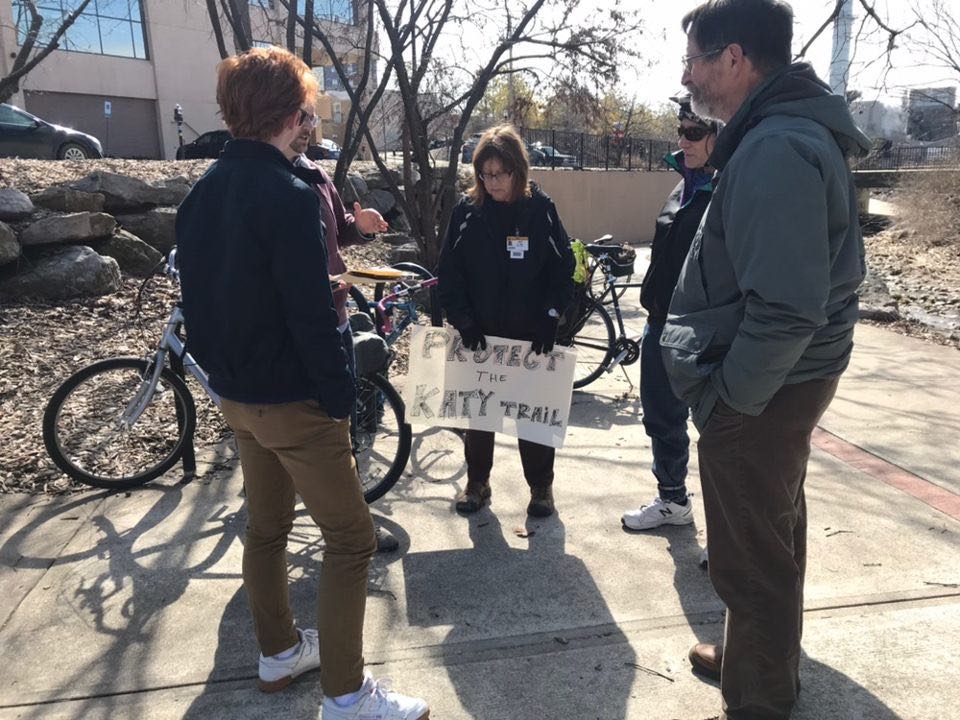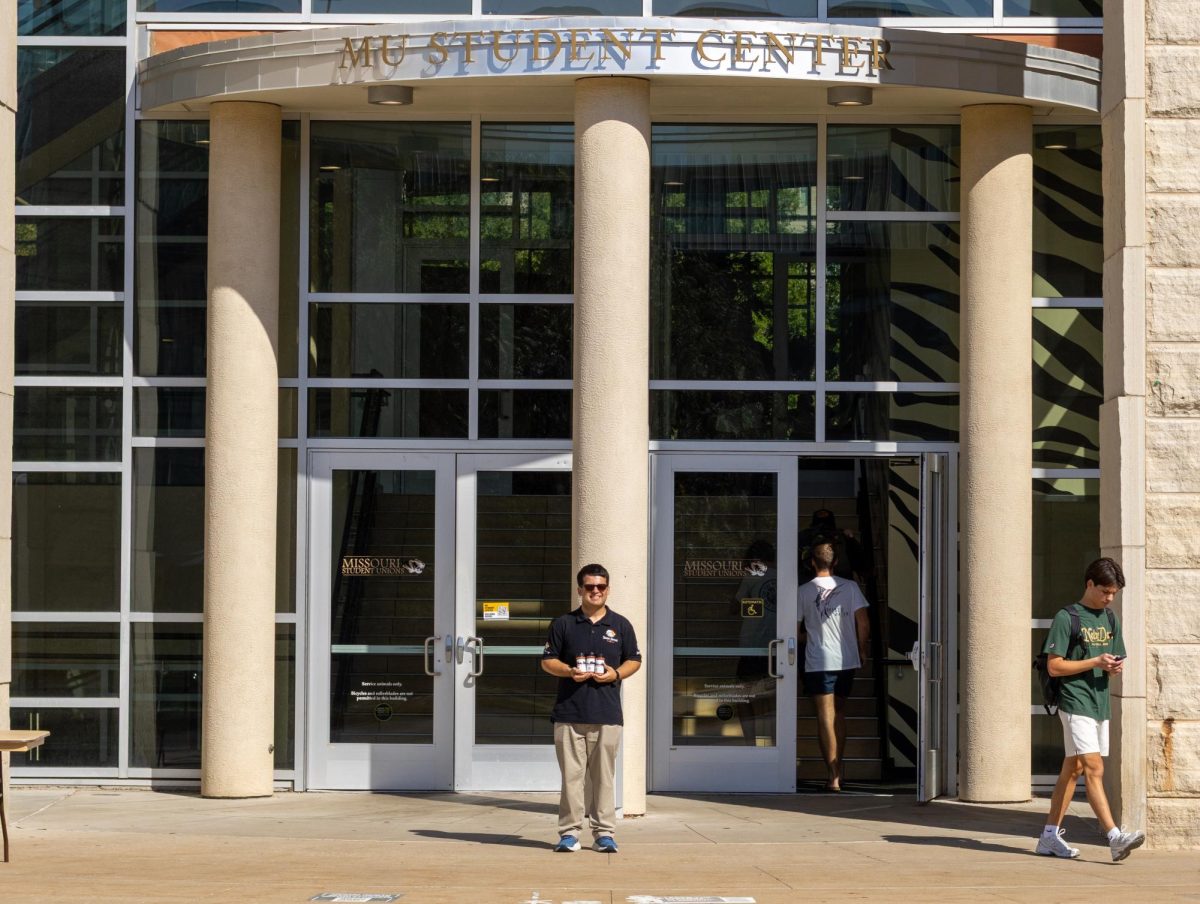Five cyclists gathered in Flat Branch Park Monday morning before cycling off to deliver a petition to UM System President Mun Choi. The petition, signed by 555 people at the time of the event, was an attempt to dissuade Choi and the UM System from selling a portion of land in St. Charles County.
The petition had 2,074 signatures as of March 12 according to Add Up, the website the Sierra Club used to host the petition.
The Missouri chapter of the Sierra Club, a national grassroots environmental association, organized the event in hopes of preserving the land, which is around the Missouri Bluffs Golf Club and next to the Katy Trail State Park, the Weldon Spring Conservation Area and the Busch Greenway.
The land, which was originally given to the university by the federal government in 1948, would be sold to a private housing developer.
“In 2017, the university entered into an agreement to sell approximately 180 acres of land in Missouri Bluffs for possible development of single and multi-unit housing, the proceeds of which will be used for educational purposes, in keeping with our land grant mission,” Choi said in an email. “Following an extensive public process in 2018, on June 25, 2018, the St. Charles County Council approved the development plans and rezoned the property south of the Missouri Research Park.”
Upon learning about the sale 15 months ago, the Missouri Sierra Club and members of the public began to challenge it at a local level, Andy Heaslet, Missouri chapter organizer with the Sierra Club, said.
In March 2018, the St. Charles County Planning and Zoning Commission voted against the sale 8-1. This vote was overturned by the St. Charles County Council, a decision which Weldon Woods Inc., an environmental nonprofit group, filed a lawsuit against in July 2018.
The case has since been dismissed by the plaintiffs and they are currently [weighing their options,](http://katylandtrust.org/proposed-development-katy-trail-missouri-river/) according to The Katy Land Trust website.
“We aren’t litigating the case, so we can only know so much, but we know that it’s coming soon,” Heaslet said. “So, that’s sort of our sense of urgency. This may be our last chance to get the university to wield its power to get out of this pickle that they’ve gotten themselves into and make a good decision that’s better for everyone.”
In creating the petition, Heaslet and the Sierra Club aimed to let the public opposition to the sale be heard.
“We’re going to peddle the petition to President Choi to make sure that he gets the message that this is what the people want,” Heaslet said. “We’re going to ask him to engage the public in a robust process to find a future that makes sense for the conservation areas for the state park and for the university altogether.”
Development on the land could have a range of ecological impacts on things like the endangered bats and the many springs in the area, Heaslet said.
“It’s really steep, hilly terrain, so if you take out a handful of trees, it’s bad for those trees and the critters that live there, but it’s also going to start bad erosion, and you’re going to have run off problems as well,” Heaslet said.
A subdivision on the land would also affect the people who use the area’s trails, Heaslet said.
“For the 160,000 people who use this area, their experience is going to be changed,” Heaslet said. “They don’t go to the Katy Trail to be in people’s backyards. They go because it’s all of our backyard, and it’s sort of a place where you can be close to nature and clear your head and be a whole, healthy human.”
There would, however, be a buffer between the land sold and the Katy Trail, Choi said in an email.
“In reaffirming our commitment to serve the public good, the university will retain a significant portion (approximately 46 acres) of the land closest to the river bluffs and the Katy Trail for future public use, and we publicly promise that this land will not be subject to private development,” Choi said in an email. “Doing so will provide a significant buffer between the Katy Trail and the proposed development while also keeping a large tract of land in its natural state, allowing wildlife to flourish and Missourians to enjoy it for generations to come.”
The event’s five cyclists included Nobel laureate George Smith and Mark Haim, the director of Mid-Missouri Peaceworks. Haim said that even though the petition has already been turned in, those interested in voicing their opinions can still do so.
“I would encourage anyone who is interested in seeing this land protected and not turned into a subdivision that degrades the trail to contact President Choi and to make their voice heard,” Haim said. “Hopefully, by us being visible, it will encourage other people to recognize the issues of concern and to take action.”
Choi said that he enjoyed meeting and discussing with Heaslet and the other cyclists, and that the university system does consider the concerns of the public.
“The public process in St. Charles County also provided us an opportunity to meet with several groups who had a range of views regarding the sale,” Choi said in an email. “We want everyone to know that we took their concerns seriously. We are still in the process of reviewing our options and plans.”








